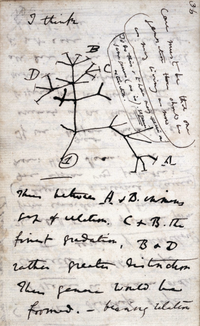
Photo from wikipedia
Abstract Inversions are a major contributor to structural genome evolution in prokaryotes. Here, using a novel alignment-based method, we systematically compare 1,651 bacterial and 98 archaeal genomes to show that… Click to show full abstract
Abstract Inversions are a major contributor to structural genome evolution in prokaryotes. Here, using a novel alignment-based method, we systematically compare 1,651 bacterial and 98 archaeal genomes to show that inversion landscapes are frequently biased toward (symmetric) inversions around the origin–terminus axis. However, symmetric inversion bias is not a universal feature of prokaryotic genome evolution but varies considerably across clades. At the extremes, inversion landscapes in Bacillus–Clostridium and Actinobacteria are dominated by symmetric inversions, while there is little or no systematic bias favoring symmetric rearrangements in archaea with a single origin of replication. Within clades, we find strong but clade-specific relationships between symmetric inversion bias and different features of adaptive genome architecture, including the distance of essential genes to the origin of replication and the preferential localization of genes on the leading strand. We suggest that heterogeneous selection pressures have converged to produce similar patterns of structural genome evolution across prokaryotes.
Journal Title: Molecular Biology and Evolution
Year Published: 2017
Link to full text (if available)
Share on Social Media: Sign Up to like & get
recommendations!